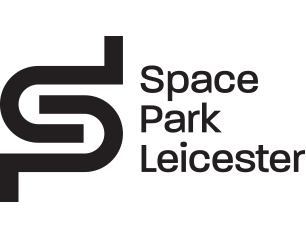Space Park Leicester makes £89m impact on economy in first year
• University of Leicester’s pioneering £100 million space hub releases new assessment of its economic impact at the end of its first year
• Follows launch of Leicester’s ‘Space City’ cluster, representing up to £233 million of investment
• Space City partnership includes Space Park Leicester, University of Leicester, DOCK, National Space Centre, Leicester City Council, and the Leicester and Leicestershire Enterprise Partnership (LLEP)
Space Park Leicester has generated an estimated £89m for the economy in its first year of operation, according to figures released to mark its first anniversary.

The calculation represents the impact of 607 jobs whose employment is supported by the pioneering space hub, that builds on the University of Leicester long-established expertise in space research, innovation and education.
It comes as Space Park Leicester joins the new Space City cluster in Leicester that will create one of the largest and most connected Enterprise Zones for space-related activities in the UK.
Space Park Leicester, officially opened by British astronaut Tim Peake in March 2022, is a unique single-site science and innovation park dedicated to – and specifically designed for – space-related companies and researchers, covering enterprise, innovation and teaching. A strategically placed space sector cluster with a national and international focus, it is forecast to contribute £750 million a year to the UK space sector over the next decade.
A new rapid assessment of the space sector in Leicestershire by space economics consultancy know.space estimates the Gross Value Added (GVA) of Space Park Leicester, representing the labour productivity of its employees, as £89.1m.
Since opening, it has landed 5 major Foreign Direct Investments, created 125 new jobs and hosted more than 200 events and visits. Over 20 leading organisations with a wealth of experience collaborating with industry and public sector bodies, both in the UK and globally, now reside at Space Park Leicester, including Rolls Royce, Airbus, Northrop Grumman, Satellite Applications Catapult, CGI, EarthSense and Maxar. The NERC funded National Centre for Earth Observation also has its headquarters at Space Park Leicester.
Professor Richard Ambrosi, Executive Director of Space Park Leicester, said: “We are proud of the success achieved in this first year and since the opening of Space Park Leicester and look to the future. It is a testament to the talented team of people working tirelessly across science, engineering, operations and commercial functions. We continue to build on our heritage in the space sciences and look forward to increasing our collaboration with industry, national and international partners. Our ambition for the future is captured by our growing science portfolio and plans to physically expand into a commercially focused additional phase of Space Park Leicester called Digital Space Futures.”
Space Park Leicester will be a cornerstone of Leicester’s Space City cluster, dedicated to space research, production, manufacture and development, and will make Leicester a key part of the UK’s Space Spine. The cluster will also be home to non-space related knowledge economy businesses, those working towards decarbonisation, innovative start-ups and established businesses looking for grow on space.
Representing up to £233 million of investment, the Space City partnership includes Space Park Leicester, University of Leicester, DOCK, National Space Centre, Leicester City Council, and the Leicester and Leicestershire Enterprise Partnership (LLEP). Space City is part of the Loughborough and Leicester Science and Innovation Enterprise Zone. Space Park Leicester builds on the University of Leicester’s 60-plus year heritage as a hub for the UK space sector and collaborator with international space agencies. Since the formation of the University’s Space Research Group, now the largest in Europe, it have been involved in more than 90 space missions and had at least one instrument operating in space in each year since 1967.


